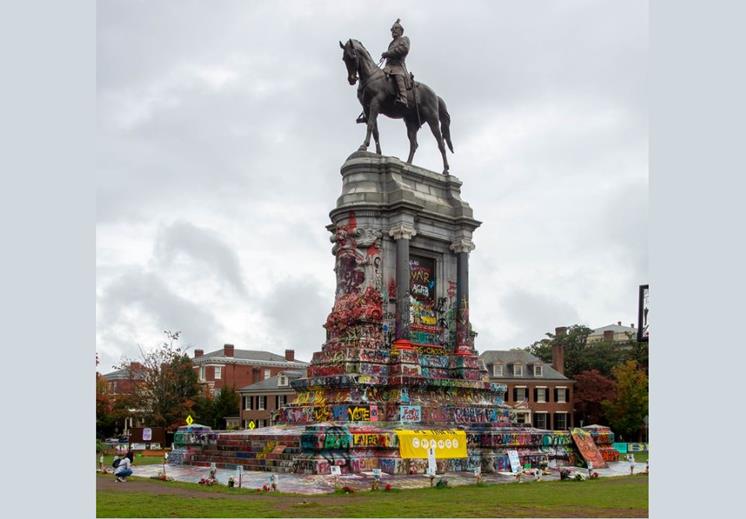After the Civil War, former North Carolina governor Zeb Vance became a U.S. senator. His Northern colleagues enjoyed his affable nature and sense of humor, and some of them invited him to Massachusetts during a break in government business. While there, Vance attended a party, and eventually required a visit to the outhouse, where his hosts as a joke had hung a photograph of General Robert E. Lee. The story goes something like this:
When Vance returned to the festivities, he said nothing of the picture. Finally, one of the pranksters asked him, “Senator, didn’t you see the picture of Lee in the outhouse?”
“I saw it,” Vance said.
“So what did you think?”
“I thought it was entirely appropriate,” Vance said. “General Lee used to scare the dung out of you Yankees all the time.”
Which was true. And it seems he is still scaring Americans today, particularly those who can’t stand the sight of his statue for the hate it supposedly represents.
Lee’s statue in Charlottesville, Virginia became a focal point for chaos and riot in 2017 when protestors called for its removal, indicting Lee as a slaveholder and an insurrectionist. Yet Lee was one of the great generals of American history. He held Northern armies at bay until he finally met his match in Ulysses Grant and the Union’s overwhelming numbers of men and resources. After the war, Lee modestly took on the presidency of what was then Washington College, now Washington and Lee University, where he advised his students and Southerners at large to accept the war’s outcome and reunite with the country.
For more than a hundred years afterwards, Southerners and Northerners alike venerated Lee. A large number of biographies, including books aimed at young people, praised his generalship and his personal conduct. He was regarded as a great American, a man to be admired for his principled conduct and his stoicism in the face of defeat.
No more. In the wake of the chaos surrounding Lee’s statue, the Charlottesville city council decided in July to remove it, along with one of Stonewall Jackson, and to store them in a secure location. In December, the council voted unanimously to donate the statue to an African American heritage center where the enormous bronze piece will be melted down and recast into a monument celebrating “racial justice and inclusion,” The New York Times reported.
The council rendered this decision despite offers to buy or adopt the statue, including one from Statuary Park in Gettysburg, Pennsylvania. In doing so, it seems the council and its supporters completely failed to consider the artistic and historical value of the Lee statue.
In 1917, Paul McIntire of Charlottesville commissioned sculptor Henry Merwin Shrady from New York City to design and cast a statue of Lee. Shrady, who had already long worked on a Ulysses Grant memorial in Washington, began the project, but died before he could complete it. McIntire then turned the project over to Italian-American sculptor Leo Lentelli, who became one of the most accomplished American sculptors of the 20th century. Today his work adorns cities like New York, Washington D.C., and San Francisco.
By 1924, Lentelli had completed this bronze monument to the Civil War general, which ranks among his most important works.
And now the Charlottesville city council has decided to destroy this historic work of art, to melt it down into a piece of modern art.
To destroy Lee’s statue rather than to offer it to those who would give it a home is a petty and mean-spirited act of spite and hatred. How ironic. It would seem those iconoclasts who want to destroy Lee’s statue because of its allegedly harmful, traumatic nature need to look in the mirror.
Image Credit:
Flickr-David Brossard, CC BY-SA 2.0
